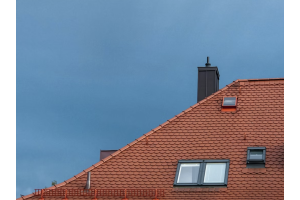6 Things No One Tells You About The Everest Base Camp Trek

Nepal’s Everest Base Camp Trek is one of the most famous trekking destinations in the world.
You’ve probably seen the stunning photos, heard about the exhilarating adventure, and read countless packing lists.
However, this isn’t just another trek.
It's a journey packed with unexpected moments, local surprises, and hidden gems that most people only discover once they’re already on the trail.
This article will debunk six things that no one tells you so you can trek smarter, soak in every moment, and truly make this adventure unforgettable!
1. Secret Viewpoints with Better Views
Indeed, getting to Everest Base Camp Trek is an achievement for trekkers.
But here’s something most people won’t tell you: Base Camp itself doesn’t offer the best view of Mount Everest!
When you’re so close to the mountain that the peak is obscured by other towering ridges that slope down to you.
For the best view, you should make a detour to Kala Patthar (5,545m) on the way. This overlook, located just above Gorak Shep, provides a spectacular panoramic view of Everest, Nuptse and nearby peaks. It’s awesome.
Another hidden gem? Nangkartshang Peak near Dingboche! It’s a less crowded alternative with breathtaking landscapes, and since it’s at a lower altitude than Kala Patthar, it’s a great place to stay.
So, mate plan wisely and get to your scenic spots with no crowds, and your journey will be more exciting.
2. Local Cultural Experiences You Don’t Want To Miss
Most trekkers focus so much just on reaching Base Camp that they forget to soak in the rich Sherpa culture along the way.
Well, this beautiful region is home to centuries-old monasteries, traditional Sherpa villages and unique spiritual practices, making this trek more than a physical challenge.
There is another biggest place in Khumbu region, for this you must visit Tengboche Monastery.
If you’re fortunate enough, you may observe a Buddhist prayer ceremony, a one-of-a-kind experience that’s both soothing and surreal, surrounded by the towering peaks.
You can also catch some moments to chat with local tea house owners and porters. Their stories of living in the mountains and trekking multiple times a year will leave you in awe.
3. The Best Time To Trek
Everyone says spring (March) and autumn (September–November) are the best times to trek, but did you know there’s a hidden window for those who prefer fewer crowds?
The late monsoon season (early September) can be surprising. Because the skies begin to clear, the paths are less crowded, and all the greenery from the monsoon rains makes a beautiful contrast to the snowy peaks.
Similarly, early winter (late November to early December) provides crisp, clear views and fewer travelers on the trails.
Sure, it’s chillier, but with the right gear, you’ll have a more serene and immersive experience.
4. Must-Have Packing Items That No One Mentions
I believe you know the most packing lists cover the basics like layers, trekking boots, and a good backpack. But what about the underrated items that can make your journey smoother and easier?
- A buff or scarf: The dusty paths around Gorak Shep can be hard on your throat. A buff can protect you from dust and cold alike.
- Electrolyte Tablets: Between the sweating and changes in altitude, staying hydrated isn’t simply a matter of drinking water. So, pack some electrolyte tablets.
- Passport-size extra photographs: These may be required in case of unforeseen permit issuance or if you wish to extend your trek.
- A light book or journal: Evening meals are long in tea houses, and having something to read or write in is all part of the experience.
- Cash: Namche’s ATMs are fickle, and once you move higher, everything like Wi-Fi, even a simple cup of tea comes with an extra price tag.
Be careful! Don’t overpack, it makes your journey uncomfortable.
5. The Hidden Challenges That Surprise Most Trekkers
Even the most prepared trekkers find a few surprises along the way. One of the biggest is how long some of the days feel.
The distances might look comparatively tame on the page, but altitude, rocky trails and unpredictable weather can turn a “short” trek into a much longer paths.
Another unexpected challenge? Appetite management at high altitudes.
As you ascend, your body has to work harder, and digestion slows down. Some trekkers develop an aversion to food, while others crave foods.
That’s why it’s wise to bring along some comfort snacks so you can boost your energy levels. And while we all love capturing memories, don’t rely entirely on your phone or camera!
Cold temperatures drain batteries quickly, so carry a power bank and extra batteries to ensure you can snap all the once-in-a-lifetime moments.
6. Making the Most of Your Trek
While the ultimate goal is reaching Everest Base Camp, don’t forget to enjoy the journey itself.
Some of the best moments on the Everest Base Camp trek are the little things along the way: the first view of Everest from Namche Bazaar, the breath-stealing sunrise at Tengboche, or just the feeling of overwhelmingly bragging when crossing high suspension bridges.
If you have extra time, consider adding a side trek to Gokyo Lakes or taking a slower itinerary to explore more villages.
There are hidden gems in the Everest region that are often bypassed by trekkers in their eagerness to reach Base Camp.
But remember, it’s not only about the destination; it’s about the adventure, the people you’ll meet, the stories you’ll bring home.
Final Thoughts
The Everest Base Camp trek is more than just a challenge, it's an experience that will test you, inspire you, and leave you with lifelong memories.
While most guides cover logistics, these lesser-known tips can ensure you get the most out of your trek.
So, whether this is your first trip or your latest adventure, there is an experienced team, Mosaic Adventure, to make your experience unforgettable. They are known for their deep local knowledge, passionate guides, and responsible tourism practices, which help travelers discover the real Nepal.
Got questions?
Email us at contact@mosaicadventure.com or WhatsApp us at https://wa.me/+9779823816556start to begin planning your next trek now.






